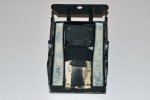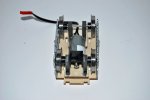JimmyB
Now retired - trains and fishing
Those of you who have read my Streetcar thread will have seen I am still having problem with my power bogie, and have decided to start anew with the bogie. The plan is to make the bogie top frame from plastikard, then using the original side frames, modify one to have larger axles boxes, and then cast new side frames in polyurethane 2-part resin, the plan to then have the axles supported in (bushed) axle boxes. So has anybody used resin side frames, and are there any draw backs. I suspect the 3D printed ABS would possibly be a better, but not an option (for me), and building up from plastikard would only produce a weaker structure (imho), comments and thoughts welcome 



